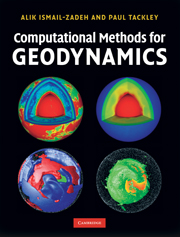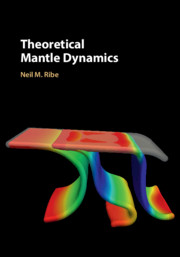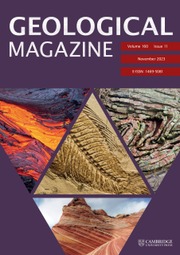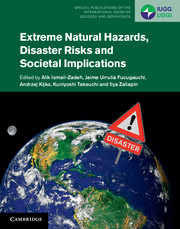Computational Methods for Geodynamics
Written as both a textbook and a handy reference, this text deliberately avoids complex mathematics assuming only basic familiarity with geodynamic theory and calculus. Here, the authors have brought together the key numerical techniques for geodynamic modeling, demonstrations of how to solve problems including lithospheric deformation, mantle convection and the geodynamo. Building from a discussion of the fundamental principles of mathematical and numerical modeling, the text moves into critical examinations of each of the different techniques before concluding with a detailed analysis of specific geodynamic applications. Key differences between methods and their respective limitations are also discussed - showing readers when and how to apply a particular method in order to produce the most accurate results. This is an essential text for advanced courses on numerical and computational modeling in geodynamics and geophysics, and an invaluable resource for researchers looking to master cutting-edge techniques. Links to supplementary computer codes are available online.
- Covers all of the key numerical techniques in one single volume that avoids complex mathematics - making it readily accessible to a geoscience audience
- Teaches the reader how to apply the methods to real research questions by defining a model using sets of mathematical equations and initial/boundary conditions
- Demonstrates real geodynamic applications - highlighting which methods are most appropriate to solving different kinds of research problems
- Provides links to a set of computer codes that can be used to model a range of geodynamic processes
Reviews & endorsements
'An outstanding synthesis of contemporary issues in geodynamics with a rigorous but highly accessible treatment of modern methods in numerical modeling. I have no doubt that this book will be an invaluable resource for students and researchers entering the field of computational geophysics for years to come.' David Bercovici, Yale University
'This is the most current and complete book on computational geodynamics. I would recommend this book to every aspiring student or researcher interested in computations.' David Yuen, University of Minnesota
'… an essential text for advanced courses on numerical and computational modelling in geodynamics and geophysics, and an invaluable resource for researchers looking to master cutting-edge techniques.' The Eggs EGU Newsletter (the-eggs.org)
'… extensive, one of a kind, well organized and well thought out … an exceptional, must-have addition to any geodynamicist's library, whether a graduate student or a seasoned researcher.' Mathematical Geosciences
Product details
July 2010Hardback
9780521867672
332 pages
253 × 195 × 21 mm
0.91kg
45 b/w illus. 15 colour illus. 6 tables
Available
Table of Contents
- Foreword
- Preface
- Acknowledgements
- 1. Basic concepts of computational geodynamics
- 2. Finite difference methods
- 3. Finite volume method
- 4. Finite element methods
- 5. Spectral methods
- 6. Numerical methods for solving linear algebraic equations
- 7. Numerical methods for solving ordinary differential equations
- 8. Data assimilation methods
- 9. Parallel computing
- 10. Modelling of geodynamic problems
- Appendix A. Definitions and relations from vector and matrix algebra
- Appendix B. Spherical coordinates
- Appendix C. List of computer codes and how to access them
- References
- Index.







